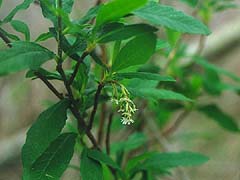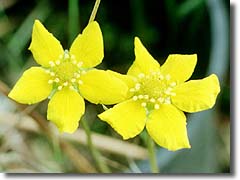
The large and diverse Rosaceae is diffcult to define precisely - particularly variable are the pistil and fruiting arrangement - so this will limit itself to the characteristics of the wild varieties found in the area. The features of the common local genera can be easily identified: Rubus (blackberries and raspberries), Fragaria (strawberries), Rosa (roses), and Potentilla (cinquefoils). With a few additions, most of the wild members of Rosaceae fall into one of these families.
The leaves on these plant are alternate, although the leaflets are usually opposite. The leaves often have stipules (paired appendages at the base, sometimes as large as regular leaves). The calyx has 5 lobes, and there are either 5 petals or none, at least 15 stamens, and one-to-many pistils. The one-seeded fruit may be dry or fleshy, separate or bunched (as in blackberries).
Rosaceae is a strong component of the mountains native habitats, and one will often find areas populated by almost nothing but members of this family - groupings of cream bush, toyon, cinquefoil, horkelia, blackberry, thimbleberry and strawberries are quite common.




